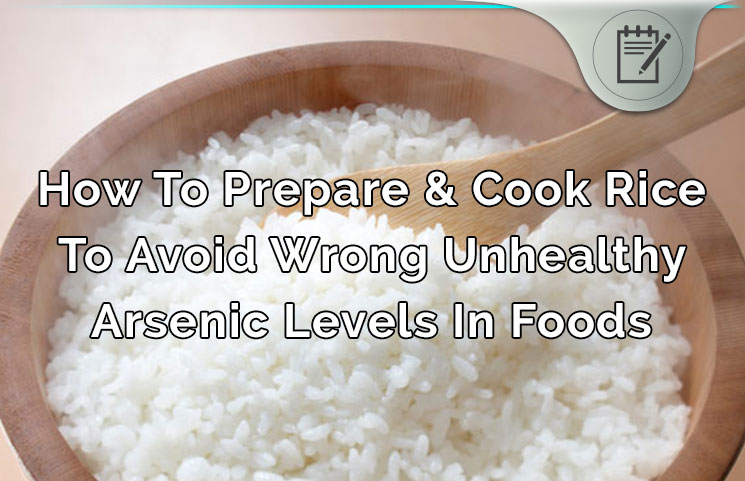Scientists have discovered that a common rice cooking method is inadvertently introducing trace amounts of arsenic to our food.
During experiments, researchers found that the so-called “normal method” for cooking rice exposes consumers to a range of health problems – including heart disease, diabetes, and cancer.
Because of this, millions of people around the world could be at risk.
Which rice cooking method is the problem? If you cook your rice by boiling it in a pan until water has steamed out, then I have bad news for you. Apparently, this rice cooking method is insufficient in preventing exposure to traces of arsenic – a natural poison found in the environment.
Why is There Arsenic in Rice?
Arsenic contaminates rice while it grows because of the use of common industrial toxins and pesticides. In addition, arsenic is a naturally-occurring element in the earth’s crust, and is present in the water, air, and soil. As the FDA explains, “the plant and grain [of rice] tend to absorb arsenic more readily than other food crops”.
Researchers find that people with arsenic in their systems have a higher risk of serious health problems like heart disease, diabetes, and cancer. When arsenic is introduced to a growing body – like in babies, kids, or teenagers – it can lead to major developmental problems.
Here’s the problem: researchers have known about the link between arsenic and rice for some time. However, it’s always been thought that arsenic is expelled when the rice is cooked. Unfortunately, in testing, researchers found that arsenic is only removed from rice when the rice has soaked overnight.
How the Study Worked
The study was led by researchers at Queens University Belfast, including Andy Meharg, professor of biological sciences.
Professor Meharg, in an appearance on the BBC show, “Trust Me, I’m a Doctor” used three popular methods of rice cooking to analyze the levels of arsenic inside.
The first method involved using a ratio of two parts water to one part rice, which causes the water to be steamed out during the cooking process. This is the most popular method in the world today. Using this method, arsenic was found in the rice after cooking.
The second method involved using 5 parts water to one part rice, and then washing the excess water away. This caused arsenic levels to be cut in half.
In the third method, rice was soaked overnight, leading to an 80% reduction in arsenic levels.
Based on this research, it was concluded that the safest way to cook rice is to let it soak overnight. After letting it soak overnight, you wash the rice until the water is clear, then drain it into a saucepan using a ratio of five parts water to one part rice.
Does Your Rice Have Arsenic?
The UK’s Independent cited a study performed by the Institute for Global Food Security in 2014, which found that 58% of rice and rice-based food products sold in the UK had “high levels of arsenic”.
Last year, the EU introduced new legal limits aimed at reducing the amount of arsenic in rice.
In America, the US FDA places a limit of 100 parts per billion (ppb) for inorganic arsenic in infant rice cereal, although the limits aren’t as strict in adult food products. This limit was only implemented in 2016.









